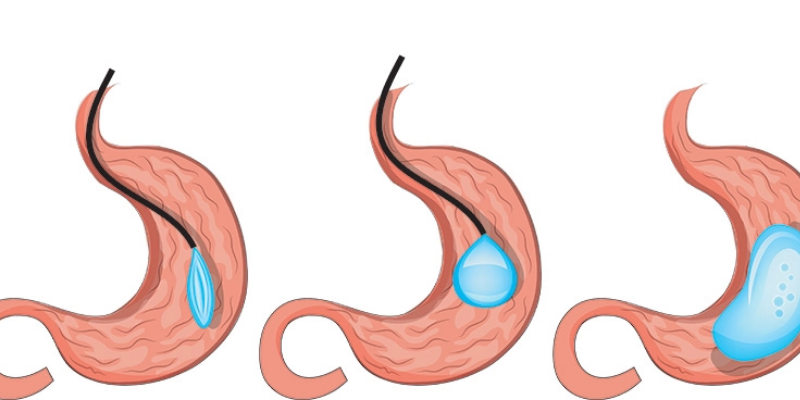It’s time to answer your question of what is a gastric sleeve. With vertical sleeve gastrectomy (VSG), a large part of your abdomen is remove and a thin, banana or sleeve-shaped stomach is left. Sleeve gastrectomy, also known as gastric sleeve resection or tube gastrectomy, is an operation in which approximately 90 percent of the stomach is remove to reduce its capacity to approximately 100 to 200 mL. The stomach is normally a bag that can hold a lot of food and liquid and expand at the same time. This enables us to consume more food than is required to maintain a healthy weight. Almost all weight loss techniques aim to diminish the stomach’s capacity in some way. The big, superfluous part of the stomach is permanently removed during a sleeve gastrectomy.
What Is A Gastric Sleeve
You may be eligible for a sleeve gastrectomy if your BMI is greater than 40 (or greater than 35 for weight-relate disorders) and you have tried all other types of diets without long-term success. Under general anesthesia, a sleeve gastrectomy is perform using a laparoscopic (keyhole) technique. For the insertion of keyhole surgical instruments, five small incisions (between 5 and 15 mm in length) are made. It may sound confusing when we ask what is a gastric sleeve, but actually it is not. The stomach is stapled along its length (through a sizing device called a bougi) to produce a long tube that resembles a banana using these instruments. After that, the majority of the stomach is removed and thrown.
The Gastric Sleeve Procedure Works In Two Ways
- Reducing stomach size provides satisfaction with fewer meals.
- Hunger hormones are lower, making hunger and food interest less of a factor.
Small incisions are very always use for gastric sleeve surgery. Instead of one large incision, several small incisions are use in this surgery, resulting in less discomfort.
Advantages to your health:
What is a gastric sleeve? Vertical sleeve gastrectomy is an effective procedure, according to studies:
- In 70% of patients, type 2 diabetes is correct, and the illness is generally resolve on the day of surgery.
- And in 75% of patients, high blood pressure is corrected or improved.
- In 78.4 percent of individuals, it lowers elevated cholesterol.
- These gains are equivalent to those seen following other weight-loss procedures.
The standard of living:
- Quality of life studies for bariatric surgery patients:
- Having more energy and feeling better.
- Having more free time to engage in recreational and physical activities.
- Increasing productivity.
- Feeling more self-assured than before surgery.
Time to Recover:
- According to studies, patients who have had a vertical sleeve gastrectomy:
- After a day or two in the hospital, you may be able to depart.
- In less than two weeks, you should be able to return to work.
Possible Concerns
Because you will not be able to fulfill the necessary food consumption, you will need to supplement your diet with a daily multivitamin and calcium. In two ways, the sleeve gastrectomy operation aids weight loss. Reduces the amount of food that can be consume at one time – The amount of food that the bag can hold is drastically limit, causing you to feel full after just a few bites. Ghrelin, a hormone that conceals food intake, is secret. The amount of ghrelin generate is reduce as the stomach size is reduced, resulting in a reduction in appetite.
It’s critical to keep in mind that surgery is merely a tool for weight loss. To get the finest outcomes from the operation, it’s critical to change your dietary habits. Limit your fluid intake and lower your eating rate to build food tolerance by consuming calorie-dense foods and a variety of healthful foods. Weight loss will be limit, or future weight gain may be likely if eating practices are not adjust following surgery. During your consultation with the nutritionist, you will receive more thorough information on proper eating habits.
Anticipated Weight Loss
What is a gastric sleeve ? Sleeve gastrectomy has a high success rate for both immediate and long-term weight loss. After a sleeve gastrectomy, weight loss is usually faster than after other common procedures. In 6 to 12 months, most patients can anticipate to lose 60 to 70% of their excess body weight.
The benefits of a sleeve gastrectomy:
- Whole foods are generally palatable, but only in tiny amounts.
- Weight loss is usually quick and consistent.
- It doesn’t necessitate the continuous tweaks that other treatments, such as gastric banding, do. Regular follow-up is require, however, to verify that weight loss is appropriate and that nutrient intake is enough.
A sleeve gastrectomy has a number of drawbacks.
The following are some downsides of a sleeve gastrectomy surgery:
While problems are uncommon, they are frequently more severe than those associated with other weight loss treatments like gastric banding. If a leak does emerge, it might be a months-long problem to resolve.
What Exactly Is A Gastric Band? (Stomach Tightening)
This is another variation of our question of what is a gastric sleeve. A silicone band is insert around the stomach, approximately 20 mm below the confluence of the esophagus and the stomach, in the gastric band, also known as the gastric banding method. The band’s inner wall resembles an elongated balloon or a bicycle tire. A small catheter connects this balloon to a port inserted beneath the skin. During surgery, the band is left deflate, but it is gradually inflate over the next month with serum injections through the subcutaneous port.
The hourglass-shaped band, which is compose of silicone and has no allergic reactions, splits the stomach into two sections. When the tiny pouch in the upper stomach is filled with food, an early sense of satiety develops, and food intake is reduce. The primary premise of the band approach, like other surgical treatments, is to change the patient’s behavioral habits and eating style. It may be feasible to swiftly return to pre-operative weight if the band is remove. As a result, unless the patient’s eating habits alter, this operation is not a long-term treatment for morbid obesity. It can, however, help people lose weight and live a healthy life by lowering the chances of obesity-related secondary disorders.
In the Simplest Terms, What is a Gastric Balloon?
Are you looking for a weight loss solution? Did you already search, “what is a gastric balloon?” The gastric balloon is a minimally invasive procedure involving placing a temporary balloon in the stomach to help with weight loss. During the process, the doctor inserts a thin tube through the patient’s mouth and into their stomach. The balloon is then filled with salt water or air, which helps to reduce feelings of hunger and limit how much food can be consumed at one time. It typically remains in place for six months before being removed.

After removing the gastric balloon, it is recommended that patients follow a healthy lifestyle to maintain their weight loss results. This may include eating more nutritious foods, exercising regularly, and consulting with nutritionists or dieticians as needed. They can better provide you with information on “what is a gastric balloon?”
If you are looking for a gastric balloon, try searching “gastric balloon near me” online to find a good weight loss center to book a consultation. Try to read reviews written about the center associated with “gastric balloon review” to get a good impression of whether it is a center to be trusted.



